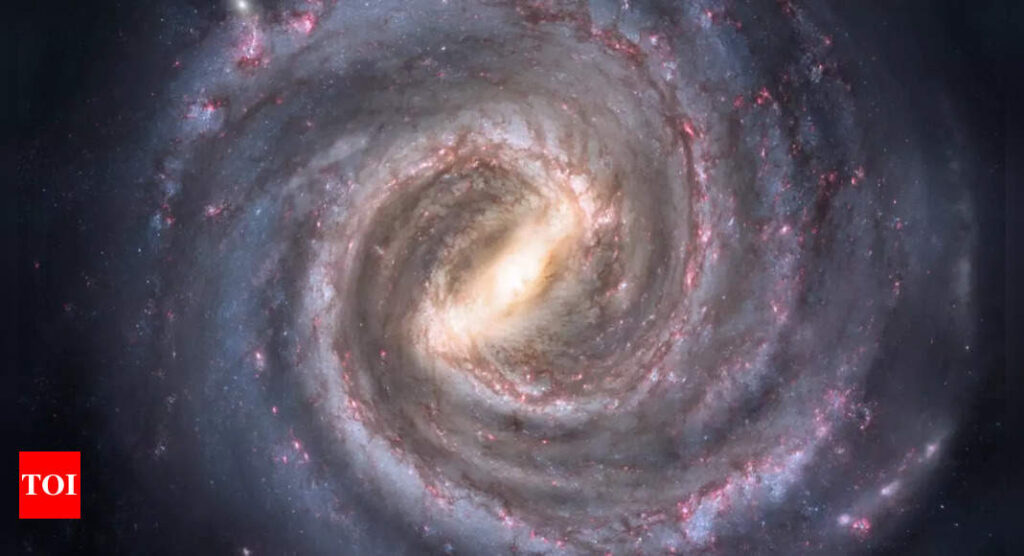[ad_1]
Using the James Webb Space Telescope, an international team of researchers, including those at The University of Manchester in the UK and University of Victoria in Canada, have discovered that galaxies like our own Milky Way dominate throughout the universe and are surprisingly common.
Announcing the new research, The University of Manchester suggested that disk galaxies are 10 times more common in the universe’s early years than once thought. The researchers published their peer-reviewed study in The Astrophysical Journal on September 22.
Astronomers have long thought that newly minted galaxies that began merging together just after the Big Bang, about 13.7 billion years ago, were too fragile to boast any noticeable structures like spiral arms, bars or rings. Those galactic features were thought to form during a time at least six billion years after the Big Bang. According to the new study, however, these delicate shapes could’ve manifested as early as 3.7 billion years after the Big Bang — which is almost at the beginning of the universe.
“Based on our results, astronomers must rethink our understanding of the formation of the first galaxies and how galaxy evolution occurred over the past 10 billion years,” Christopher Conselice, an astronomy professor at The University of Manchester and a co-author of the new study, said in a statement
Existing theory said that disk galaxies were rare until the universe was “middle-aged”. Lead author Leonardo Ferreira of the University of Victoria said, “For over 30 years, it was thought that these disk galaxies were rare in the early universe due to the common violent encounters that galaxies undergo. The fact that Webb (telescope) finds so many is another sign of the power of this instrument and that the structures of galaxies form earlier in the universe, much earlier in fact, than anyone had anticipated.”
According to the new study, the team classified the sample set of close to 4,000 galaxies from the early universe by shape — like disks, point sources and spheroids. Team members further classified them as smooth or structured, with galaxies in the latter group featuring bursts of star formation and indications of mergers with other galaxies. The latest findings suggest a need for new ideas that explain how galaxies evolved over the past 10 billion years.
Announcing the new research, The University of Manchester suggested that disk galaxies are 10 times more common in the universe’s early years than once thought. The researchers published their peer-reviewed study in The Astrophysical Journal on September 22.
Astronomers have long thought that newly minted galaxies that began merging together just after the Big Bang, about 13.7 billion years ago, were too fragile to boast any noticeable structures like spiral arms, bars or rings. Those galactic features were thought to form during a time at least six billion years after the Big Bang. According to the new study, however, these delicate shapes could’ve manifested as early as 3.7 billion years after the Big Bang — which is almost at the beginning of the universe.
“Based on our results, astronomers must rethink our understanding of the formation of the first galaxies and how galaxy evolution occurred over the past 10 billion years,” Christopher Conselice, an astronomy professor at The University of Manchester and a co-author of the new study, said in a statement
Existing theory said that disk galaxies were rare until the universe was “middle-aged”. Lead author Leonardo Ferreira of the University of Victoria said, “For over 30 years, it was thought that these disk galaxies were rare in the early universe due to the common violent encounters that galaxies undergo. The fact that Webb (telescope) finds so many is another sign of the power of this instrument and that the structures of galaxies form earlier in the universe, much earlier in fact, than anyone had anticipated.”
According to the new study, the team classified the sample set of close to 4,000 galaxies from the early universe by shape — like disks, point sources and spheroids. Team members further classified them as smooth or structured, with galaxies in the latter group featuring bursts of star formation and indications of mergers with other galaxies. The latest findings suggest a need for new ideas that explain how galaxies evolved over the past 10 billion years.
[ad_2]
Source link











More Stories
We can’t wait to face India in the final: Pat Cummins | Cricket News
Railways plans 3,000 additional trains in next 4-5 years to minimise number of waitlisted tickets | India News
Faridabad: Man dies after ‘falling from hotel room window’ while partying with friends